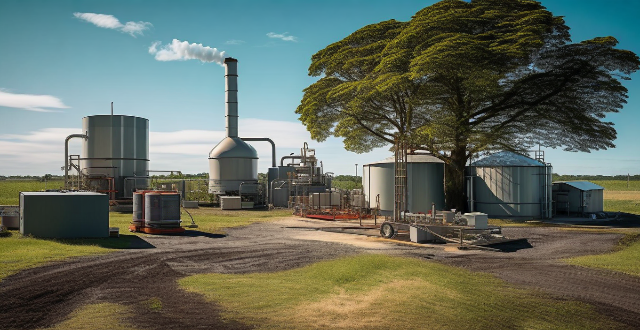A carbon tax is a fee on burning carbon-based fuels to reduce emissions and promote clean energy. To minimize its negative impact on businesses, consider gradual implementation, incentives for innovation, clear policy, revenue neutrality, support for affected industries, collaboration, and monitoring. This balances environmental goals with economic realities for sustainable development.

Designing a Carbon Tax to Minimize Negative Impacts on Businesses
A carbon tax is a fee imposed on the burning of carbon-based fuels (coal, oil, gasoline, etc.), which are the primary sources of carbon dioxide emissions. The goal of this tax is to reduce greenhouse gas emissions and promote clean energy alternatives. However, businesses often worry about the potential negative impacts a carbon tax could have on their operations and profitability. To design a carbon tax that minimizes these concerns, several key considerations should be taken into account:
Gradual Implementation
Phased Approach
- Start with a low rate and gradually increase it over time. This allows businesses to adjust and plan for the additional costs without being overwhelmed initially.
- Long lead-time for implementation gives companies ample opportunity to invest in more efficient technologies and processes.
Incentives for Innovation
Tax Credits and Rebates
- Offer tax credits for businesses that reduce their emissions below a certain threshold or adopt green practices.
- Rebate programs can provide financial relief for companies that demonstrate significant strides in reducing their carbon footprint.
Clear and Predictable Policy
Stable Rates and Regulations
- Ensure that the carbon tax rate and regulations are stable and predictable over the long term. This stability enables businesses to make informed decisions about investments in clean technology.
- Regularly communicate updates and changes to the policy to maintain transparency and trust with businesses.
Revenue Neutrality
Using Tax Revenue Wisely
- Use the revenue from the carbon tax to lower other taxes that disproportionately affect businesses, such as payroll or corporate income taxes.
- Allocate funds towards research and development in clean energy solutions to further support businesses transitioning to greener practices.
Support for Affected Industries
Transitional Support
- Identify sectors that may be particularly hard hit by the carbon tax and provide targeted support to help them adapt.
- This could include grants, job training programs, or other forms of assistance to help workers transition to new industries if necessary.
Collaboration and Consultation
Industry Input
- Work closely with business leaders and industry associations to understand the potential impacts on different sectors.
- Solicit feedback and suggestions from these groups to ensure the tax is workable and fair for all concerned.
Monitoring and Evaluation
Continuous Assessment
- Regularly monitor the economic and environmental impacts of the carbon tax to gauge its effectiveness.
- Be prepared to make adjustments based on empirical evidence to ensure the policy remains effective and equitable over time.
By carefully considering these elements when designing a carbon tax, policymakers can help mitigate potential negative impacts on businesses while still achieving the desired environmental outcomes. It's crucial to balance environmental goals with economic realities to create a sustainable future for all stakeholders involved.